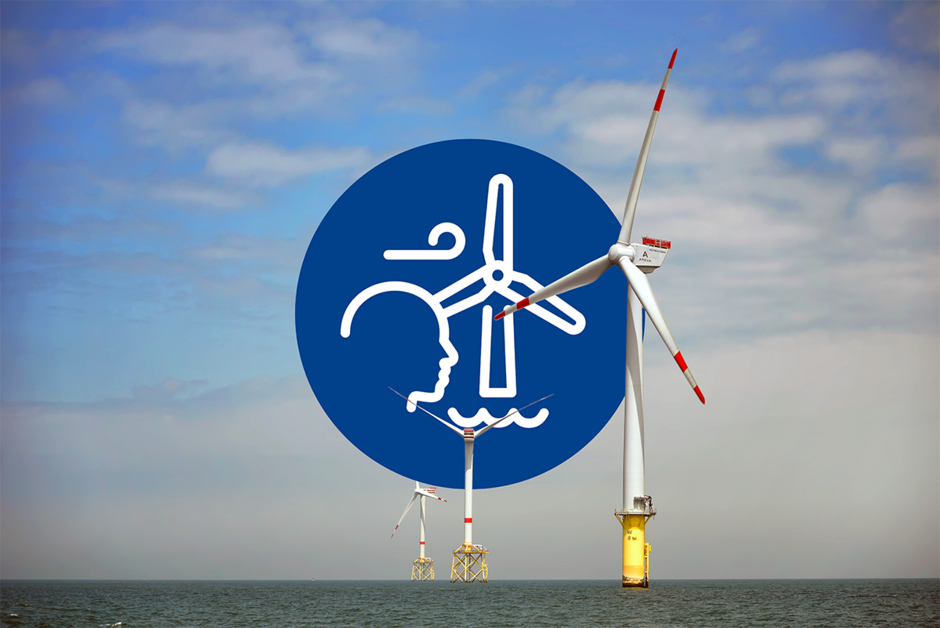Living lab 70 GW offshore wind
In the coming years, the largest power plant for renewable energies is to be developed in the North Sea through the extensive expansion of offshore wind energy. In addition to technical and planning challenges, issues relating to the sustainable use of maritime space and the marine impact as well as the social and structural changes in the coastal regions must also be taken into account. We will be supporting this process with the living lab over the next five years.
The living lab 70 GW offshore wind project was applied for by the Carl von Ossietzky University of Oldenburg and the Leibniz University of Hanover as members of ForWind - Centre for Wind Energy Research. The project is being carried out jointly with the Fraunhofer Institute for Wind Energy Systems, the Sociological Research Institute Göttingen at the Georg August University, the Helmholtz Centre Hereon and the Technical University of Braunschweig.
The team of speakers consists of Prof Dr Kerstin Avila (Carl von Ossietzky University Oldenburg) and Prof Dr.-Ing. habil. Torsten Schlurmann (Leibniz University of Hanover). The coordinator is Dr Stephan Barth (Carl von Ossietzky University of Oldenburg/ForWind).

Goals, methods and innovation areas
Motivation and research approach
With a planned installed capacity of over 300 GW, offshore wind energy in the North Sea will make a significant contribution to Europe's energy supply in the future. Germany intends to contribute 70 GW to this target by 2045. In order to achieve this goal, technical innovations must be developed along the entire value chain.
In the living lab 70 GW offshore wind, a holistic socio-technical analysis of the planned expansion of wind energy in the German North Sea by 2045 will be carried out. The basic principles and building blocks of possible development paths for achieving the 70 GW offshore capacity are to be developed and translated into recommendations for action. The technical innovations will be used as a lever for sustainable expansion in close collaboration with the wind industry.
The living lab works on real-world problems that are developed, processed and evaluated in a transdisciplinary manner with non-scientific stakeholders. This approach brings together researchers, authorities, civil society groups, industrial companies, media representatives and other stakeholders.
Innovation areas
| Name | Research questions |
| I. Society | Conflict potentials, opportunities and conditions for success of the planned offshore expansion. Solution-orientated participation processes and techno-economic issues. |
| II. Marine spatial planning | Analysing different expansion strategies in the German Bight using mesoscale models and preparing sustainable maritime spatial planning. |
| III. Life-cycle management of turbines | Analysis of the ageing of existing turbines and the improvement of the fatigue behaviour and service life of turbines and wind farms. |
| IV. System integration and aerodynamics | Wind farm control based on short term performance predictions and planning and integration of even larger turbines for onshore and offshore applications. |
| V. Marine consequences | Collection of reliable field data on the influence of offshore wind energy expansion on marine physical processes. Assessment of impacts on the marine environment. Strategies and recommendations for recording and reducing these impacts. |
Innovation area I - Social and economic issues relating to the expansion of offshore wind energy
The expansion targets for offshore wind energy, which are being pursued under great time pressure, raise economic and social questions, without which the success of this elementary transformation project of the energy transition is in doubt.
Innovation area II - Sustainable maritime spatial planning and utilisation of the German Bight
Due to the limited area, the planned installed wind capacity in the German Bight is one of the most densely built-up wind farm areas in the world. The aim is therefore to further develop and validate models for sustainable spatial and land use planning with regard to co-utilisation.
Innovation area III - Life cycle management of offshore wind turbines and wind farms
The continuous availability of at least 70 GW of installed nominal capacity, even in phases of decommissioning and repowering of older wind farms, is crucially linked to issues of operation and a coordinated planning process.
Innovation area IV - System-orientated integration and aerodynamics of offshore wind turbines and wind farms
In addition to the quantity, the quality of the wind energy fed into the grid is becoming increasingly important. At the same time, the rapid growth in the size of wind turbines and the densification of wind farm clusters are resulting in greatly changed inflow conditions that require new operating and control strategies.
Innovation area V - Marine load limits and cumulative ecological consequences
The considerable expansion of offshore wind energy capacity is being increasingly scrutinised by society due to its potential impact on the environment. However, the lack of a quality-assured data basis and the lack of understanding of site-specific factors make it difficult to assess environmental impacts.